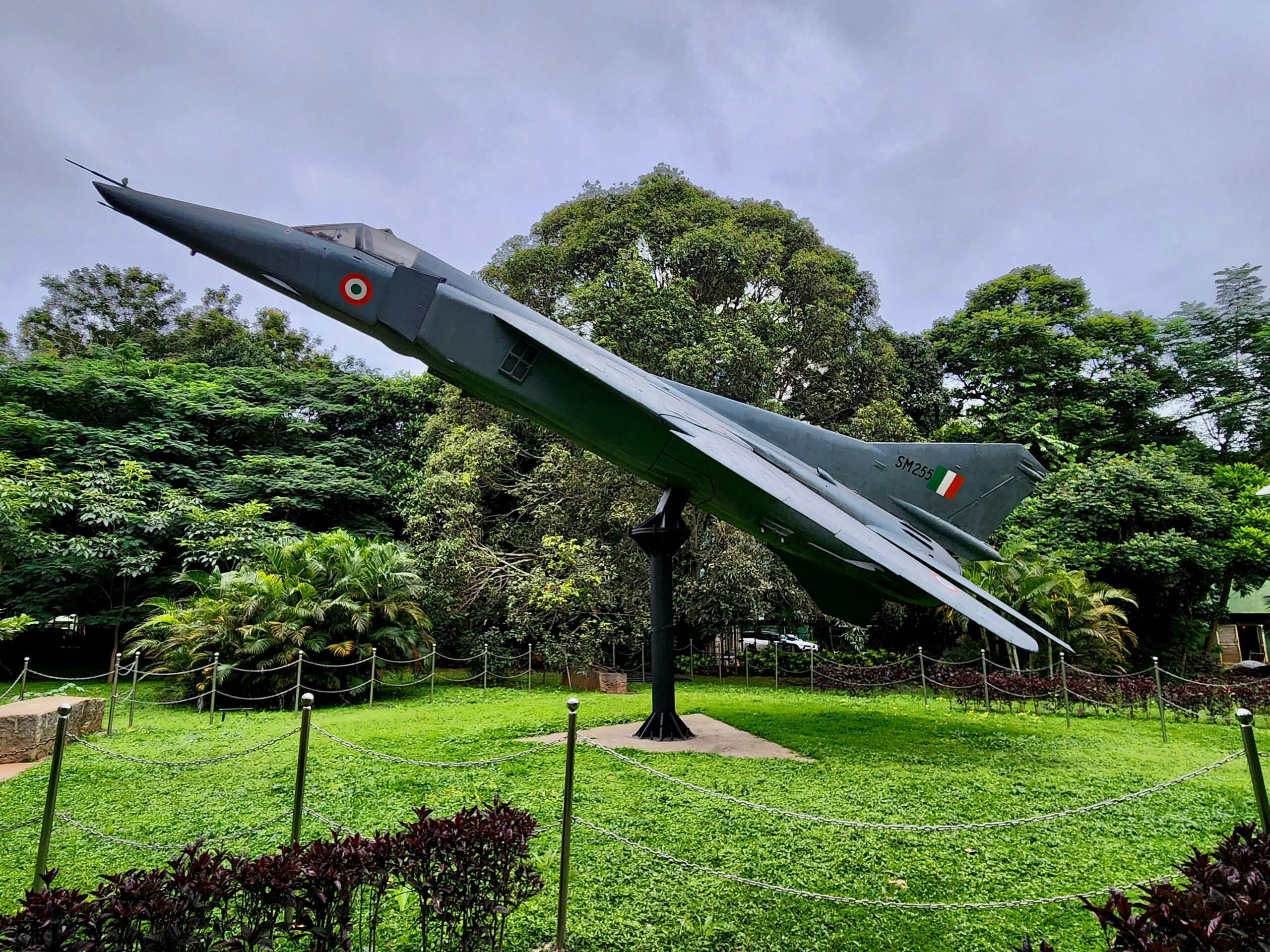Introduction to Kargil Diwas
Kargil Diwas, also known as Kargil Vijay Diwas, is a solemn yet proud day observed annually on July 26th in India. This day serves as a poignant reminder of the valor and sacrifice of the Indian armed forces during the Kargil War of 1999. The conflict, which took place in the treacherous terrains of the Kargil district in Jammu and Kashmir, saw Indian soldiers pushing back Pakistani intruders who had surreptitiously crossed the Line of Control (LoC) and occupied strategic high-altitude positions.
The significance of Kargil Diwas extends beyond a mere military victory; it is a day of national pride and reflection. It honors the courage, dedication, and ultimate sacrifice of soldiers who laid down their lives to protect the sovereignty of India. The Kargil War was a crucial moment in India’s military history, marking a decisive win despite the challenging geographical and climatic conditions.
To commemorate this victory, various events and ceremonies are organized across the country. The primary celebrations occur at the Kargil War Memorial in Dras, where top military officials, government dignitaries, and the families of martyrs gather to pay their respects. Wreath-laying ceremonies, patriotic songs, and remembrance parades are some of the highlights of the day. Educational institutions often hold special assemblies, and media outlets broadcast documentaries and interviews to recount the heroism displayed during the war.
Kargil Diwas is not only a day of remembrance but also an occasion to instill a sense of patriotism and unity among the citizens of India. It reminds us of the high price of freedom and the enduring spirit of the nation’s armed forces. As we observe Kargil Vijay Diwas, we are called to remember the past, honor the present defenders, and inspire future generations to uphold the values of courage and sacrifice.
Historical Background of the Kargil War
The Kargil War, fought between India and Pakistan from May to July 1999, originated from long-standing geopolitical tensions rooted in the partition of British India in 1947. The divided region of Kashmir, claimed by both nations, has been a flashpoint for multiple conflicts. As early as 1948, the first Indo-Pakistani war established the Line of Control (LoC), a de facto border that has seen numerous skirmishes over the decades.
Infiltration by Pakistani soldiers and militants into the Indian-administered territory of Kargil in early 1999 marked the escalation of tensions into full-scale warfare. The mountainous terrain of Kargil, with its strategic vantage points, was critical for controlling the supply routes and maintaining military dominance in the region. The conflict was primarily concentrated in high-altitude areas, with altitudes ranging from 14,000 to 18,000 feet.
The timeline of events began in May 1999 when Indian patrols discovered the intrusions. Initial skirmishes quickly escalated as India launched Operation Vijay to reclaim the occupied territories. Key battles, such as those at Tololing, Tiger Hill, and the Batalik sector, saw intense combat, with both sides suffering significant casualties. By late July, India had successfully recaptured most of the infiltrated areas, and the conflict officially ended on July 26, now commemorated as Kargil Diwas.
Prominent figures in the war included Indian military leaders like General Ved Prakash Malik, the then Chief of Army Staff, and Lieutenant General H.M. Khanna, who commanded the Northern Command. On the Pakistani side, General Pervez Musharraf, who later became President of Pakistan, was a key strategist behind the incursion. The conflict underscored the tactical and strategic importance of the Kargil region, emphasizing the need for vigilance along the LoC.
The Kargil War remains a significant chapter in the annals of Indo-Pakistani relations, shaping military and diplomatic strategies in the subcontinent. The bravery and sacrifices of the soldiers on both sides continue to be honored and remembered, particularly during the annual observance of Kargil Diwas.
Interesting Facts About the Kargil War
The Kargil War, fought between India and Pakistan in 1999, stands as a testament to human endurance, strategic ingenuity, and the ever-present shadow of conflict in the geopolitics of South Asia. One of the most striking aspects of the conflict was the extreme environmental conditions under which the soldiers operated. The battlegrounds, situated at altitudes ranging from 10,000 to 18,000 feet, subjected soldiers to freezing temperatures, often dropping below -10 degrees Celsius. The thin air at such high altitudes posed significant physiological challenges, including hypoxia and severe frostbite.
Innovation played a crucial role in the Indian Army’s strategy during the conflict. The use of high-altitude warfare tactics, coupled with specialized equipment like snow boots and weather-resistant gear, proved instrumental. The Indian Air Force introduced precision-guided munitions, marking one of the first instances of such technology being used in the region. This tactical innovation helped in neutralizing well-entrenched enemy positions with minimal collateral damage.
The media’s role during the Kargil War was unprecedented. For the first time, the conflict was brought into living rooms across India through real-time television coverage. This extensive media presence not only galvanized public opinion but also played a role in diplomatic efforts by highlighting the realities of the conflict to the international community. Embedded journalists provided firsthand accounts of battlefield conditions, bringing stories of heroism and sacrifice to the forefront.
Among the numerous tales of bravery, Captain Vikram Batra’s story stands out. Known for his indomitable spirit and the iconic slogan “Yeh Dil Maange More,” he became a symbol of courage and sacrifice. His actions during the recapture of Point 5140 and subsequent operations earned him the Param Vir Chakra, India’s highest military honor. Numerous other soldiers displayed similar valor, often going beyond the call of duty in the face of overwhelming odds.
These facets of the Kargil War not only highlight the operational challenges faced by the military but also underscore the human element of warfare. The stories of innovation, media influence, and individual heroism continue to resonate, providing valuable lessons in resilience and strategic planning.
The Role of Israel in the Kargil War
During the Kargil War of 1999, Israel played a significant role in supporting India through critical military assistance. This support was instrumental in enhancing India’s operational capabilities, thereby contributing to its eventual success in the conflict. Israel’s assistance primarily encompassed advanced military technology and specialized equipment, which provided a strategic advantage to the Indian Armed Forces.
One of the pivotal contributions from Israel was the supply of Unmanned Aerial Vehicles (UAVs), specifically the Heron and Searcher UAVs. These UAVs were utilized for reconnaissance missions, offering real-time intelligence and surveillance capabilities that were crucial for monitoring enemy positions and movements in the challenging terrain of Kargil. The enhanced situational awareness provided by these UAVs allowed the Indian military to plan and execute operations more effectively.
Additionally, Israel provided India with laser-guided bombs and other precision-guided munitions. These advanced weaponry systems significantly improved the accuracy of airstrikes conducted by the Indian Air Force, thereby minimizing collateral damage and maximizing the impact on enemy targets. The integration of such sophisticated technology marked a significant upgrade to India’s existing arsenal and showcased the importance of Israel’s support in modernizing India’s military capabilities during the conflict.
The geopolitical implications of Israel’s involvement in the Kargil War were profound. This collaboration marked a new phase in India-Israel relations, characterized by increased defense cooperation and mutual strategic interests. The support extended by Israel during the Kargil War highlighted the potential for both nations to collaborate on defense and security issues, paving the way for a stronger bilateral relationship in the years to come.
In conclusion, Israel’s role in the Kargil War was crucial in enhancing India’s military capabilities through the provision of advanced technology and equipment. This support not only contributed to India’s success in the conflict but also strengthened the strategic partnership between India and Israel, setting a precedent for future cooperation between the two nations.
The Role of the United States in the Kargil War
The Kargil War of 1999 marked a significant moment in the geopolitical landscape of South Asia, necessitating international attention and intervention. Among the key global players, the United States played a crucial role, primarily through diplomatic channels. As the conflict intensified, the U.S. administration, led by President Bill Clinton, adopted a firm stance, emphasizing the need for a peaceful resolution and the withdrawal of Pakistani forces from the Indian side of the Line of Control (LoC).
One of the pivotal moments of U.S. involvement was President Clinton’s direct communication with Pakistani Prime Minister Nawaz Sharif. The United States leveraged its diplomatic influence, urging Pakistan to de-escalate the situation and respect the sanctity of the LoC. This high-level diplomatic engagement was instrumental in Pakistan’s eventual decision to withdraw its troops, thus averting a larger-scale conflict between two nuclear-armed nations.
Statements from U.S. officials during the Kargil War underscored the American commitment to maintaining regional stability. The U.S. consistently called for the restoration of the status quo ante, advocating for Pakistan’s retreat to pre-conflict positions. This unwavering support for India’s territorial integrity significantly impacted the dynamics of the conflict, placing considerable pressure on Pakistan to comply with international norms.
The broader implications of the United States’ involvement in the Kargil War were profound, reshaping Indo-US relations. The U.S. stance during the conflict was perceived by India as a sign of strengthening bilateral ties, fostering a sense of strategic partnership. Conversely, the pressure exerted on Pakistan strained US-Pakistan relations, highlighting the complexities of American diplomacy in the region.
The Kargil War thus served as a catalyst for a more nuanced American foreign policy approach in South Asia. The U.S.’s diplomatic interventions not only contributed to the cessation of hostilities but also underscored its role as a key actor in maintaining regional peace and stability. This intervention had long-lasting effects, influencing the balance of power and the trajectory of Indo-US and US-Pakistan relations in the years that followed.
Legacy of the Kargil War
The Kargil War, fought between India and Pakistan in 1999, left an indelible mark on both nations, influencing their military, political, and social landscapes. One of the most significant impacts was the transformation in defense policies and military strategies. For India, the conflict underscored the need for heightened vigilance and preparedness along the Line of Control (LoC). This realization led to a substantial increase in defense expenditure and modernization of military infrastructure. The necessity for improved intelligence and surveillance capabilities also became apparent, prompting advancements in technology and inter-agency coordination.
Politically, the Kargil War had far-reaching repercussions. It reinforced the importance of national security in Indian political discourse and solidified the government’s stance on counter-terrorism and defense. The conflict also contributed to a surge in nationalistic sentiment, which played a crucial role in subsequent elections. For Pakistan, the war led to introspection and policy shifts, particularly concerning its military and diplomatic strategies. The international community’s reaction to Pakistan’s actions during the conflict highlighted the importance of a balanced foreign policy and the need for de-escalation in regional tensions.
Socially, the Kargil War fostered a strong sense of unity and patriotism among the Indian populace. The bravery and sacrifices of the soldiers became a source of national pride, commemorated annually on Kargil Diwas. The war also influenced popular culture, inspiring numerous films, books, and other forms of media that celebrate the heroism of the armed forces. These cultural artifacts serve as a testament to the enduring legacy of the Kargil War in shaping India’s national identity.
In essence, the Kargil War was a pivotal event that not only reshaped military and political strategies but also left a lasting imprint on the collective consciousness of India and Pakistan. The lessons learned from this conflict continue to inform defense policies and national narratives, ensuring that the legacy of the Kargil War remains relevant to this day.
Commemorative Events and Memorials
Kargil Diwas, celebrated annually on July 26th, serves as a solemn reminder of the sacrifices made by the brave soldiers during the Kargil War of 1999. The day is marked with a series of commemorative events and the unveiling of memorials that honor the valor of the armed forces. One of the most notable sites is the Kargil War Memorial in Dras, Ladakh. Erected by the Indian Army, this memorial stands as a tribute to the soldiers who laid down their lives during the conflict. The memorial features a stone wall with the names of the martyred soldiers inscribed on it, and it is a focal point for the annual ceremonies on Kargil Diwas.
The day begins with a wreath-laying ceremony at the Kargil War Memorial, attended by senior military officials, government dignitaries, and the families of the soldiers. The ceremony is a poignant moment, symbolizing the nation’s respect and gratitude towards the heroes of Kargil. Various parades and military displays are organized to showcase the might and resilience of the armed forces. These events not only commemorate the past but also inspire future generations to serve the nation with the same dedication.
Public speeches are another significant aspect of Kargil Diwas celebrations. Military leaders and political figures address gatherings, reflecting on the strategic importance of the Kargil War and the lessons learned. These speeches often highlight the tales of bravery and the tactical brilliance displayed by the soldiers during the conflict. Educational institutions also organize special assemblies and activities to educate students about the historical significance of Kargil Diwas, fostering a sense of patriotism and respect for the armed forces among the youth.
Apart from the main events in Dras, commemorative activities are held across the country. Various state capitals and major cities host their own ceremonies, ensuring that the memory of the Kargil War and its heroes is preserved nationwide. The widespread observance of Kargil Diwas serves to unite the nation in a collective remembrance, ensuring that the valor and sacrifices of the soldiers are never forgotten.
Conclusion and Reflections
As we commemorate Kargil Diwas 2024, it is essential to reflect on the pivotal moments and lasting implications of the Kargil War. This conflict, which tested the resilience and determination of the Indian armed forces, has left an indelible mark on the nation’s history. Kargil Diwas serves not only as a day of remembrance for the sacrifices made by the soldiers but also as a reminder of the strategic and geopolitical complexities that define modern warfare.
Throughout the conflict, the roles played by international allies, particularly Israel and the United States, were instrumental. Israel’s provision of critical military equipment and intelligence support significantly bolstered India’s defense capabilities, enabling more effective operations in the challenging terrain of Kargil. Similarly, the diplomatic and logistical backing from the United States helped ensure a broader international understanding and support of India’s position during the conflict. These contributions underscore the importance of strategic alliances and the global nature of military and diplomatic engagements.
Kargil Diwas is not just a tribute to the valiant soldiers who laid down their lives but also a celebration of the strategic acumen and international cooperation that were crucial to India’s success. Remembering and honoring the sacrifices made by the armed forces fosters a sense of national unity and pride, while also educating future generations about the complexities of national security and international relations.
As we pay homage to the brave hearts of the Kargil War, it is imperative to continue acknowledging the lessons learned and the enduring legacy of such conflicts. The remembrance of Kargil Diwas should inspire a commitment to peace, strategic preparedness, and the valor that defines the spirit of the Indian armed forces. The stories of bravery and the support from allies like Israel and the US remain a testament to the power of unity and cooperation in the face of adversity.



